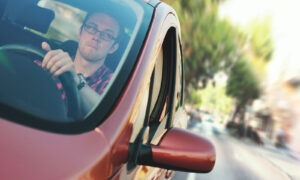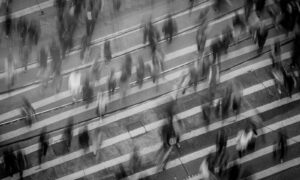We live in an age where ecology and eco-friendly attributes are considered praiseworthy by many. People are riding bikes more, using electric powered vehicles, using environmentally sound practices in home building, and they are walking more. However, there is a group of individuals who may not mind walking, but may refuse to cross a street due to an overwhelming sense of fear. This phobia is known as Dromophobia.
This individual may enjoy a walking path at a park or along a river, but if that path crosses a street they may freeze up or simply turn around refusing to cross what amounts to a barrier for them.
What Causes Dromophobia?
Imagine if you saw someone who had been struck by a car. Would you be more cautious at crosswalks? Imagine if you had been struck while crossing a street. Would you look forward to crossing? Imagine if someone you loved shared details of a negative experience while crossing the street. Would it affect the way you through of any potential future crossings?
An individual with this fear may look at vehicles weighing more than a thousand pounds as a potential threat to their existence. This is especially true if they have had firsthand experience with a pedestrian accident (as either the one struck or one who observed an accident involving a pedestrian).
When the threat of personal harm is introduced a phobic response is to do everything within their power to engage in self-preservation. This is true even if there is no real proof that there is a credible threat.
What Are the Symptoms of Dromophobia?
In severe cases a dromophobe will not willingly walk on a sidewalk even under very controlled circumstances. Some may only find the ability to cross a street with the aid of someone they trust completely.
Other symptoms may also include…
- Trembling
- Air hunger
- Nausea
- Vomiting
- Elevated heart rate
- Crying
- Screaming
- Panic attack
- Running the other direction
- Irrational statements and actions
This phobia often creates a sense of social anxiety because the individual is no longer convinced they are in control of their behaviors. The result is a tendency to stay out of the public eye to avoid embarrassment for themselves or others.
How to Overcome Dromophobia
A therapist is a great place to start because not only will they work to reduce the anxiety level they can work to answer questions about the relative safety of crossing a street when the action is done at a traffic guided cross walk.
The therapy sessions will deal not only with fear reaction, but also with what may be causing the fear and if the fear is singular or plural. What I mean by that is it is a rare thing for an individual to live with only one phobia. Usually the phobic response is intertwined with other fear-based issues.
The fear of crossing streets is also referred to as:
- Crossing the street fear
- Dromophobia




















